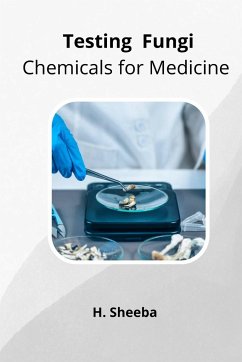Fungi are one of the most diverse and fascinating groups of organisms on the planet. They are found in every ecosystem, from the depths of the ocean to the tops of the mountains, and have been used for centuries in traditional medicine to treat a variety of ailments. Fungi produce a vast array of secondary metabolites, which are organic compounds that are not directly involved in the growth, development, or reproduction of the organism, but have important ecological roles, including defense against predators, competitors, and pathogens. Many of these secondary metabolites have medicinal properties and have been used to develop drugs for a wide range of diseases, including cancer, bacterial and viral infections, inflammation, and neurological disorders. Testing fungi chemicals for medicine involves the identification, isolation, and characterization of these secondary metabolites from endophytic fungi, which are fungi that live inside plant tissues without causing any harm. These endophytic fungi produce a wide range of secondary metabolites, some of which have unique chemical structures and biological activities that are not found in other sources. These secondary metabolites are then screened using various bioassays to determine their potential therapeutic applications, including their ability to inhibit the growth of bacteria, viruses, and cancer cells, reduce inflammation, and modulate the immune system. The pharmaceutical industry is heavily invested in the discovery and development of new drugs, and natural products from fungi are an attractive source of drug candidates because they are often more structurally diverse and biologically active than synthetic compounds. However, the discovery and development of new drugs from fungi face several challenges, including the difficulty of isolating and identifying new compounds, the complexity of their chemical structures, and the potential for toxicity and side effects. To overcome these challenges, researchers use a combination of traditional pharmacognostic methods and modern techniques, such as genome sequencing, high-throughput screening, and synthetic biology, to identify and optimize new drug candidates. Preclinical studies, such as pharmacokinetic and pharmacodynamic assessments, are conducted to evaluate the safety and efficacy of the drug candidates, followed by clinical trials to assess their therapeutic applications in humans. Once a drug candidate has been approved by the FDA, it can be commercialized and marketed to patients in need. In summary, testing fungi chemicals for medicine is a complex and exciting field of research that has the potential to transform the way we treat diseases. By harnessing the power of fungi, we can discover and develop new drugs that are safer, more effective, and more sustainable than traditional drugs.




